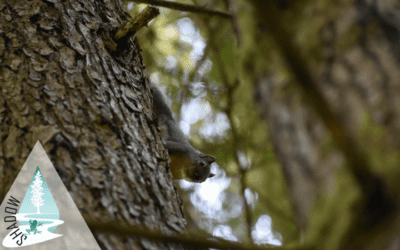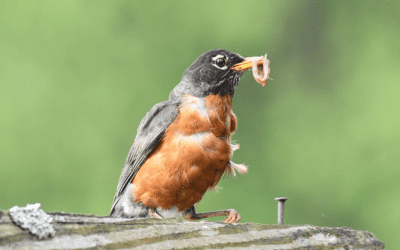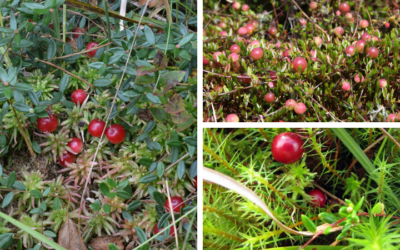Native of the Month: Pacific shrew
You’re walking along some bushes in a park, and suddenly see a tiny gray creature skittering into the fallen leaves. At first you may think it’s a rodent, but this frenetic ball of energy is actually a shrew. While it appears small, shrews are one of the most...
Wetlands Can Catch Fire??
It seems that summer is finally here in Western Washington. Time for road trips, camping in the woods, and swimming outside!It also means that it is time to take extra care around all situations of potential risk of starting wildland fires. Last year wildland...
Effect of remnant forest on insect response in fire-impacted peatland
We know that fire can be devastating to wildlife, but its effects on smaller creatures like insects are lesser studied. Some critters thrive in extreme heat like desert insects, they live in sand dunes that reach 180 degrees Fahrenheit (82 degrees Celsius)! Other...
We’re Hiring
SHADOW Lake Nature Preserve is looking to fill the role of Program and Development Director! The Program and Development Director (updated from Executive Director) is the key management leader and is responsible for overseeing the administration,...
Happy Pride Month!
The natural world is filled with colorful, magnificent, and fabulously diverse wonders. Many species of mammals, fish, and birds engage in nonreproductive sexual behavior and display same-sex courtship, pair-bonding, and co-parenting. Species like bonobos, giraffes,...
World Rainforest Day
Rainforests: the mere mention of the word conjures marvelous visions of lush, steamy jungles full of resplendent parrots and birds of paradise, butterflies on passion flowers, stalking jaguars, poison dart frogs calling beneath sprawling canopies from which...
Native of the Month – Western Hemlock
Western Hemlock - Tsuga heterophyllaIn 1947, RCW 1.20.020 of the Washington state legislature declared, “that certain evergreen tree known and described as the Western hemlock (Tsuga heterophylla) is hereby designated as the official tree of the state of...
Grizzly and Black Bear Co-occurance
As outdoor recreation evolves, it is important to look at non-human animal and human interactions especially when it comes to animals that do not fear humans as much. A study in Jasper National Park, Alberta, Canada studied how often grizzly and black bears appear in...
Outdoor Recreation
Most of us who enjoy spending time on public lands for recreation have probably been exposed to messaging about how to minimize our impact on the environment while still doing the things we love. “Take only pictures and leave only footprints,” is a well-known example...
Native of the Month: Pacific Poison Oak
Pacific Poison Oak - Toxicodendron diversiloba Pacific poison oak, also called Western poison oak, is a native plant that you hope to never come into contact with. Pacific poison oak, like the Atlantic poison oak, contains urushiol, which is a...
Caring for Wildlife from Home
Every year, acres of healthy, connected habitats are lost to urban development. Did you know that you can help decrease habitat fragmentation at home? Whether you live in an apartment building or a single-family home, you can help promote healthy habitats...
Native of the Month: Blue Orchard Bee
Blue Orchard Bee - Osmia lignariaWhat’s blue, beautiful, beneficial, and buzzes? The blue orchard bee. Native to the US and Canada, these little bees become active in early spring and get right to work pollinating some of our favorite plants. They are known to be...
Migration and Ways Animals Survive Winter
To the observant eye, the natural world around us sends many harbingers of spring: the days are getting longer, buds are beginning to swell and break on deciduous trees and shrubs, and here at SHADOW the frogs are singing their three-chambered hearts out. A very...
Native of the Month: Long-tailed weasel
Long-tailed weasel - Neogale frenata Perhaps the word carnivore conjures a specific image to your mind. Lions, tigers, and bears, oh my! But carnivores, mammals belonging to the order Carnivora and specialized in eating meat, come in all shapes and sizes. A small and...
The Amazing Adaptations of Carnivorous Plants
All living things need water to survive. Did you know that all living things also need nitrogen to survive? Nitrogen is an essential nutrient and a key component of amino acids, which are the building blocks of proteins and nucleic acids (DNA and RNA). Without...
First Dinosaur from Washington State
Along the Cedar District Formation, a geologic formation on the San Juan Islands of Washington, British Columbia, and Vancouver Island, a proximal left femur was formally recorded as the first dinosaur found in Washington state. The fossil was retrieved in the shallow...
Native of the Month: American wolverine
American wolverine - Gulo gulo luscus Yes, wolverines live in Washington! In the alpine and subalpine forests of the Cascades, wolverines make their dens by passing through deep snow, into rock crevices, or under large woody...
2022 – 2025 Strategic Plan!
SHADOW Lake Nature Preserve is pleased to introduce our 2022 – 2025 Strategic Plan—Branching Out! The lush forests and abundant water of Shadow Lake area are home to an array of local wildlife, including many species of birds, amphibians, and mammals. This area is...
What Makes our Ecosystems Extraordinary
Washington State is home to many unique species and diverse habitats. In fact, nine different terrestrial ecoregions have been delineated in Washington, and that doesn't even include marine ecosystem diversity. We’re lucky enough to find estuaries,...
Food Shopping in the New Year
Many people participate in new year resolutions at the beginning of the year to improve their lives but lose sight of their goals almost as soon as January ends. A new year can be like a new room; although we enter with every intention of performing a task, we may...
Native of the Month: Wild Cranberry
Wild cranberry (Vaccinium oxycoccos) is a low creeping perennial shrub with small evergreen leaves. The flower buds start out as deep pink, but as the buds open, the flowers become lighter in color. The flowers and berries grow in clusters at the ends of the branches...





















